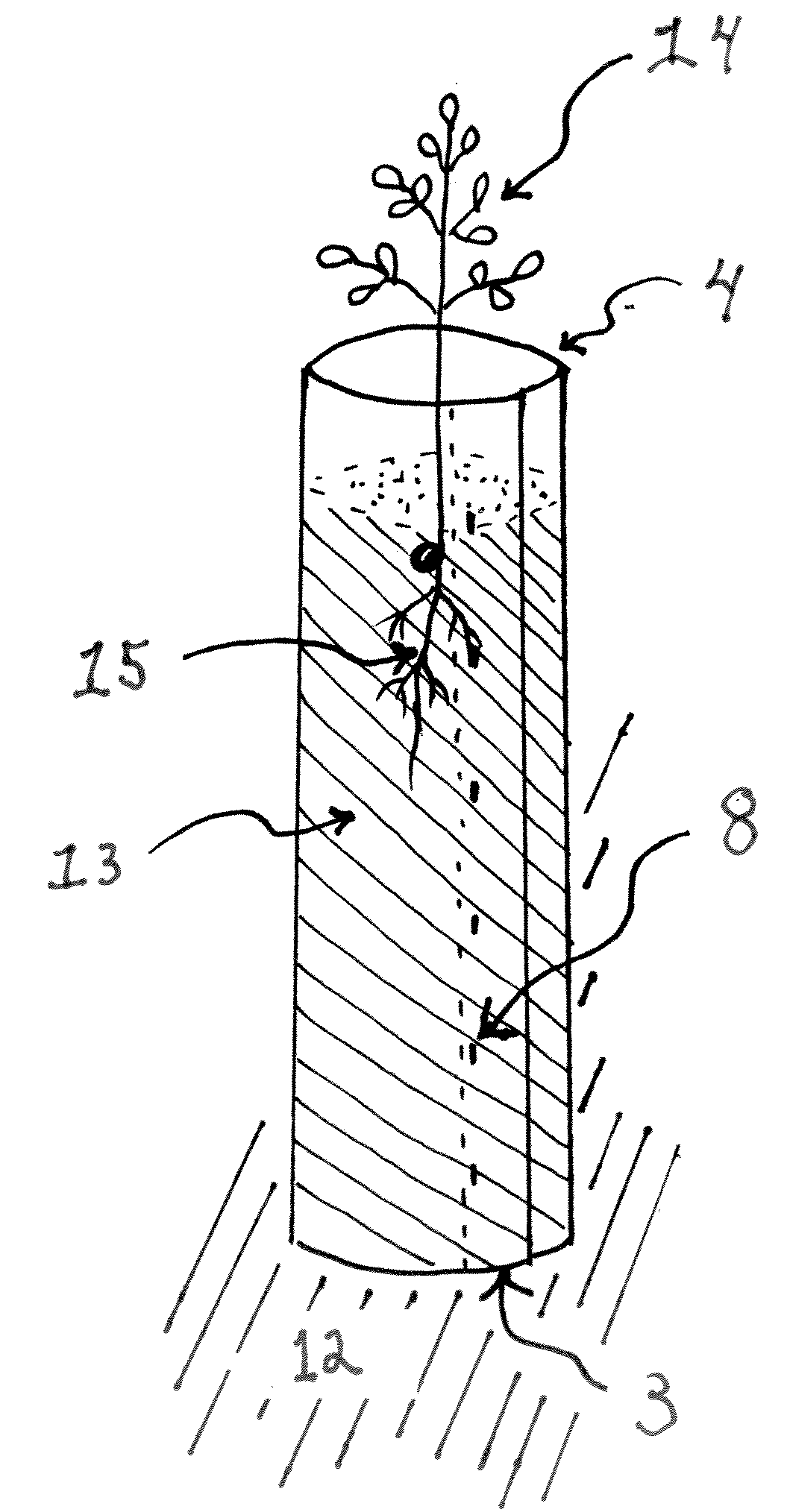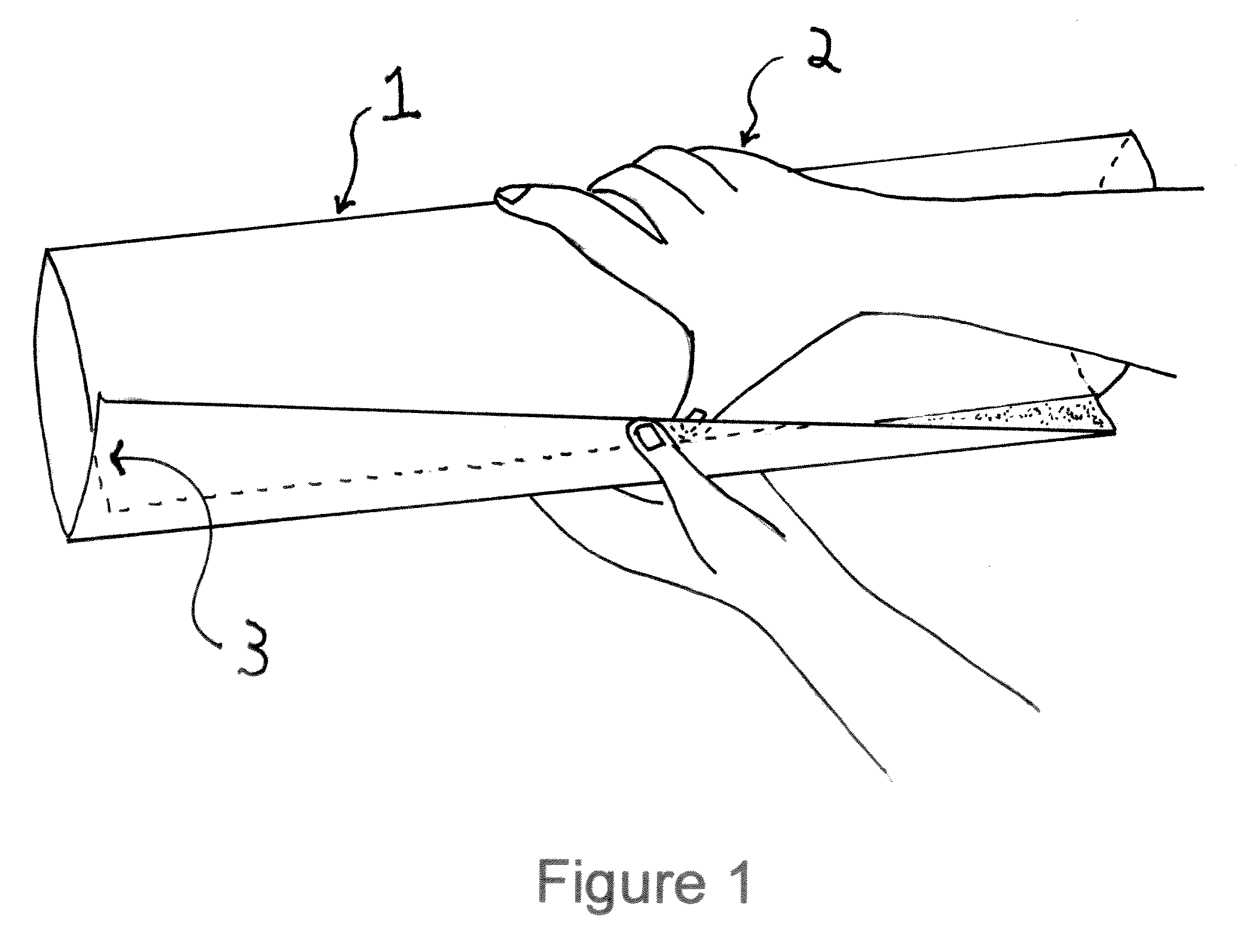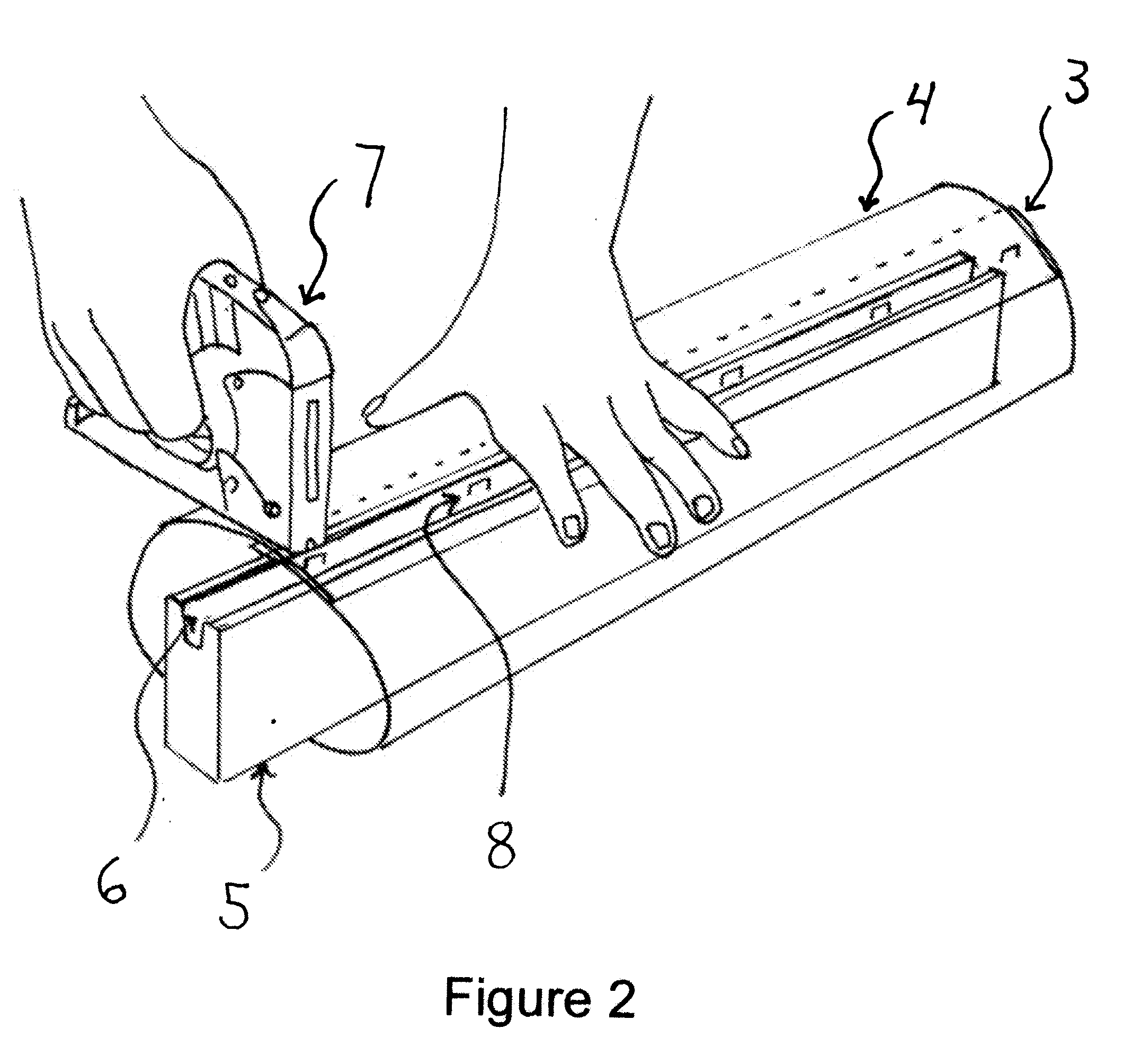Methods to Grow, Deliver, and Plant Young Trees in a Removable Tubular Container
a technology of tubular containers and young trees, which is applied in the field of methods to grow, deliver, and plant young trees in tubular containers, can solve the problems of affecting the growth of young trees in these containers, affecting the growth of young trees, etc., and achieves the effect of convenient manual planting and rapid growth of young trees above ground
- Summary
- Abstract
- Description
- Claims
- Application Information
AI Technical Summary
Benefits of technology
Problems solved by technology
Method used
Image
Examples
example 1
Construction of a Tubular Container that is about Two Foot Long and about 6 Inches in Diameter Fastened with Metal Staples
[0061]A four foot wide, 500 foot roll of polycarbonate film, 40 mil thick, masked with a protective thin film of polyethylene on both sides, was cut into 24 inch×21 inch rectangular sheets. The polyethylene masking was removed from one side of the cut sheet. The sheet was rolled by over-lapping the opposed edges of the sheet (with the masked side on the outside of the tube) that are 21 inches in length to form a tube that was approximately 6 inches in diameter and is 24 inches in length. The overlapping edges of film were stapled together with 6 evenly spaced 12 mm long by 9 mm wide metal staples (Arrow Fastener Co., Inc., Product Code #508), delivered by a hand held staple gun (Arrow Model T50P) with the aid of a wood guide as shown in FIG. 2, to form a tubular container with an open top and an open bottom. The head of the staple was snug against the plastic. Th...
example 2
Construction of a Two Foot Long by 6 Inch Diameter Tube Fastened with Cable Ties
[0062]Three 29 inch long cable ties (catalog number CT272, 9 mm wide, from CableTiesAndMore.com) were secured about the outside circumference of the tubular container made in Example 1. The cable ties were then slide off the outside of the tubular container. The cable ties that had been removed had a loop diameter of approximately 6 inches. A 24 inch by 21 inch rectangular 40 mil thick sheet of polycarbonate film of Example 1 was tightly rolled by hand into a 24 inch high tube by overlapping the edges. The diameter of the roll was less than 5 inches. The three pre-lopped cable ties were then slide over the ends of the hand-held tightly rolled sheet. The sheet was released and the sheet unrolled to the diameter of the cable tie loops. The opposed edges of the sheet overlapped by about 2 inches. One cable tie was approximately 3 inches from the top of the tube, one approximately 3 inches from the bottom of...
example 3
Construction of a Two Foot Long by 6 Inch Diameter Tube Fastened with a Removable Pin
[0063]A four foot wide, 500 foot roll of polycarbonate film, 40 mil thick, masked with a protective thin film of polyethylene on both sides, was cut into 24 inch×21 inch rectangular sheets. The polyethylene masking was removed from one side of the cut sheet. Six evenly spaced ⅜ inch diameter holes were punched along one of the 24 inch edges; the distance between center of the hole and the edge of the sheet was 0.5 inches. Six ⅜ inch diameter holes were also punched on the opposite 24 inch edge of the sheet; these holes were spaced along the edge exactly as spaced on the opposite edge; the center of these holes were 2 inches from the edge of the sheet. The sheet was rolled by over-lapping the 24 inch opposed edges of the sheet (with the masked side on the outside of the tube) to form a tube that was approximately 6 inches in diameter and was 24 inches tall, wherein the ⅜ holes on each 24 inch edge ov...
PUM
 Login to View More
Login to View More Abstract
Description
Claims
Application Information
 Login to View More
Login to View More - R&D
- Intellectual Property
- Life Sciences
- Materials
- Tech Scout
- Unparalleled Data Quality
- Higher Quality Content
- 60% Fewer Hallucinations
Browse by: Latest US Patents, China's latest patents, Technical Efficacy Thesaurus, Application Domain, Technology Topic, Popular Technical Reports.
© 2025 PatSnap. All rights reserved.Legal|Privacy policy|Modern Slavery Act Transparency Statement|Sitemap|About US| Contact US: help@patsnap.com



